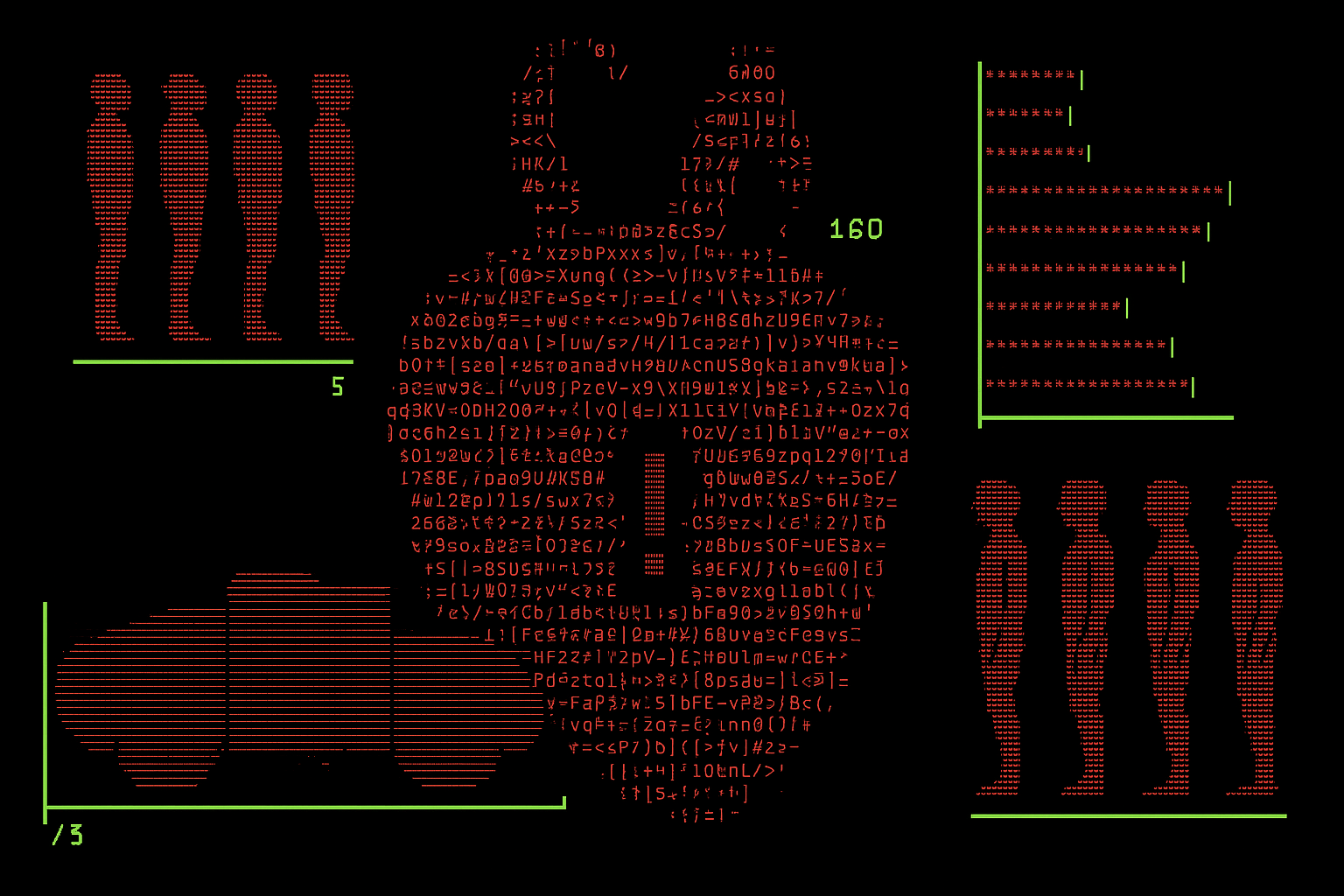Article
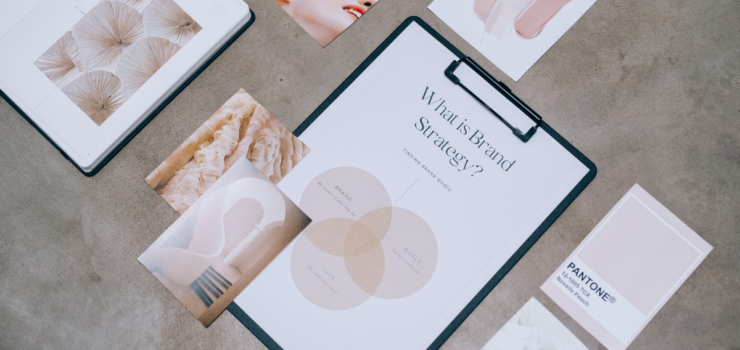
A Complete Guide to Branding with Examples and Case Study
In our modern, ever-connected world, the brand conversation grows larger and hazier with every passing day, and products are never just products anymore. Starbucks is more than coffee. BMW is more than just a car. Rolex is more than just a watch.
Interacting with these products provides experience, and we buy them because of that experience. By combining elements like logo, design, mission statement and a consistent theme throughout all marketing communications, branding aims to create a strong and positive perception of the company and its products. It’s the DNA of any business. Not having a solid brand identity leaves you out of the game; it is what can make or break your business. It tells your customers and clients who you are, what you are about, what they can expect from you and why they should work with you. The uniform brand presentation has been seen to increase revenue by 33%.
Why does branding matter now more than ever?
We live in an era of choice; better products emerge every minute and they are just a click away. Yet, some companies manage to take a considerable market share and even dominate entire industries. What all these companies have in common is an authentic brand that communicates their values in a consistent way that builds deep connections and trust.
With branding consistency, you can generate trust with consumers and become a name that people remember when deciding what to buy. Consider well-known companies like Adidas, Lego or L’Oréal. What do we remember about these brands?
From the moment you see someone wearing an Adidas shirt, it’s hard not to think of sports-related phrases like “buy high quality products” or “amazing athlete.” The company has managed to tie its logo into these connotations in such a way that when people spot one of these shirts on another person they immediately associate them as being athletic and fashionable at once!. These businesses are easily recognized because they have maintained a consistent brand (and offered a product that consumers wanted).
But customers don’t just recognize these brands – they also trust them. And you may wonder why that is. Well, when you buy Adidas sneakers you know you invest in high quality footwear that are also comfortable and durable. This type of consistency is what keeps customers coming back.
“Your brand is the most important investment you can make in your business.”
- Steve Forbes
A step-by-step guide to branding for your business
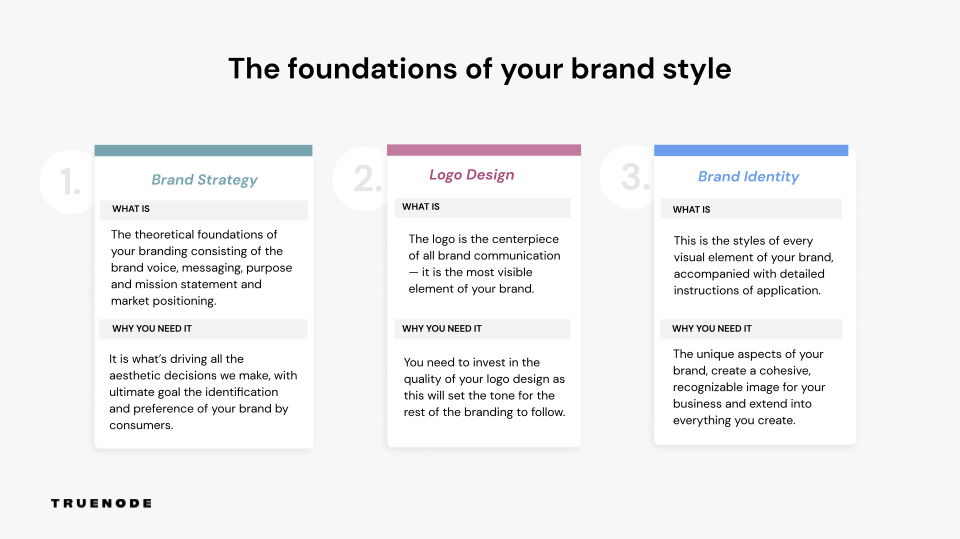
Branding is an ongoing process. Companies often strive to eliminate unnecessary spending on branding strategy as they focus on short-term results. However, that tactic inevitably leads to the need for rebranding at a later phase.
While building your brand is time-consuming, understanding the various stages of brand development will help you minimize your effort and increase productivity. Following this step-by-step guide will help you understand and implement the key elements.
1. Brand Strategy
A brand strategy outlines everything your brand needs in order to exist, from how it should be shared and discussed to what guidelines the team should follow as it grows. Your brand strategy will help you define what sets your brand apart from the competition and how you want your audience to perceive you. It encapsulates the problems you are trying to solve in a way that instantly resonates with those who face them. The brand strategy is usually developed at the beginning of a brand’s journey, before planned growth or just before a rebrand.
Brand strategy workshop
The best way to develop a brand strategy is in collaboration between the designer and the client (business owner/decision maker). Organizing a workshop is a critical aspect that will allow you to shape the purpose and values of the brand, future goals and character. Usually, a successful workshop will take up to 3 hours and includes branding specialists, on one hand, and stakeholders, CEO and/or founders, on the other hand, as participants. For example, you can bring all the decision makers in one room together (or on a conference call) and document everything in a visual way for everyone to be able to see it. The workshop consists of a series of exercises that will help you to uncover key insights about what makes your brand unique in the eyes of the customers.
The workshop will help you clarify who your brand is, what it does and why it matters. Moreover, you should figure out your brand voice or how you express yourself and talk about who you are. Remember that each brand’s voice is different, thus making yours unique. A brand voice is the personality that a brand projects to its audience. This can be through the use of language, tone, and style. For example, a company that sells sneakers will adopt a voice with more urban slang than a company that sells high luxury jewellery. Your brand voice must run consistently through all your communications channels (social media, email, website, advertisements, blog posts etc.). Once you own your brand voice, you should set the practices that define how your company will deliver its value proposition. Determining this standard is vital so customers can easily recognize its identity whenever the brand positions itself. Based on the tone of voice, language and core values, companies can define a unique way to communicate their ideas to their customers.
Market research and competitor analysis
Market research blends consumer behavior and economic trends to improve your business. It is vital to understand your consumer base from the very beginning. Gathering demographic information like age, wealth, family, interests or anything else relevant to your business can help you understand your opportunities and limitations for gaining customers.
At the same time, competitor analysis helps you learn from businesses competing for your potential customers. This is crucial to defining a competitive edge. A competitors analysis is a strategy that demands researching major competitors to acquire insight into their products, sales and marketing tactics. Executing more robust business strategies, averting competitors and capturing market shares are just some of the few benefits of doing a competitors analysis.
Creation of the brand strategy
The brand strategy workshop, the market research and the competitor analysis will help you answer the following questions:
- Why do we exist? – Purpose Statement
- What kind of future do we want to help create? – Vision Statement
- What are we here to do? – Mission
- What fundamental principles will guide us? – Brand Values
- What is the distinct personality you take on in your communications? – Brand Voice
- How does your brand speak? – Brand Messaging
- What is the fictional representation of your ideal customer? – User Persona
- What image do you want to establish in a consumer’s mind? – Market Positioning
Now that you have determined the pillars of your brand, you know who you are and how you want to position your brand on the market.
By processing the results of the branding workshop, the market research and the competitors analysis, you will be able to create a cohesive branding strategy that will guide all future decision-making.
2. Logo Design
Your logo would probably be one of the people’s first interactions with your business. A suitable logo should indicate feelings of honor, trust, excellence and integrity. It should express a series of virtues and values without saying a word. It should bring a sense of connection between the consumers and the brand, establishing a bond between the company and its community. A logo is not just about how it looks but also how it attracts attention from consumers.
Your logo is important because it communicates ownership, quality and values. It’s imprinted on your product, business card, website, social media and most importantly, in the minds of your customers.
Design a strong logo to stand out to customers, ensuring they remember your brand whilst nurturing positive associations with you. Logos have a deep and symbolic tie connected to people’s memories and emotions. An important component is the colors of your logo. If you’re a company that sells toys for kids you might want to choose bright, vibrant colors that communicate energy, fun, and excitement.
The logo of the globally renowned sportswear brand Adidas is one of the most instantly recognizable designs in the world. And yet, despite its ubiquity, the logo has a relatively simple meaning. The three bars that make up the logo represent a mountain, which symbolizes the challenge that every athlete faces when striving to reach their potential. The logo also includes the brand name, written in a font that is designed to evoke movement and energy. Taken together, these elements convey Adidas’s core values of challenge and progress.
Your logo needs to do the same for your company over time.
3. Brand Identity
Brand identity is the collection of all the visible elements a business creates to present the right image to its customers. Elements of brand identity include color, typography, iconography, imagery and decorative elements. Building a brand identity is a multi-disciplinary strategic effort, and every included element needs to support the business’s overall values, message and goals. Below is an overview of each element of brand identity.
Typography
Typography starts with the logo design and is an extension of your logo. Typography is now more important than ever because people consume words from multiple channels. With that in mind, something that works on your packaging, for example, may not work well on your website, so it’s important to consider how your typography fits your brand and the many applications it will be used for.
Color palette
Your color palette will already be defined in your logo. Think about the impact that color might have on your brand. Tiffany’s has done an excellent job incorporating its trademark color; customers automatically recognize the company before noticing the logo. Review some fundamental concepts of color and emotion before determining which colors best express the emotion you want to evoke. A brand’s color palette might range from three to eight colors: 1 main color, 2 primary colors and 3 to 5 complementary and accent colors. Choose color palettes that set you apart from competitors to prevent misleading customers. Experiment with shades and tones; don’t be afraid to play with colors.
Decorative elements
Decorative elements include the shapes, styles, layout and all the other details that make your brand stand out. It is vital that the elements, not just the one present in your logo, but also the shapes on your website, background, layout design, packaging, business cards, and other stationery, are consistent.
Imagery
The images you use in your brand identity can turn heads, turn people off or make no impression at all. And just like any other aspect of your brand, your imagery will evolve over time as trends, technology, and habits change. Nevertheless, setting a standard to stay consistent with your brand image is important.
For example, do you want to embrace an illustrative style or prefer to use photography? If you want illustrations, you can specify what type of illustration speaks more to the audience and fits with your brand identity. If you want photography, you should ask yourself, are you okay with using stock photos, or do you want to use original images?
Defining your brand’s imagery is helpful for your team as well. It will guide searching for new photos or when they need direction or inspiration for UX/UI design.
Iconography
Iconography covers all the symbols on your website, social media and across your marketing paraphernalia. When used correctly, they are highly effective in a way to relay big ideas without using a single word. Icons can be extremely useful in branding, especially in an image-based world as we live in now. Every icon should share a similar style, shape and structure to unify your communications and contribute to a consistent brand experience.
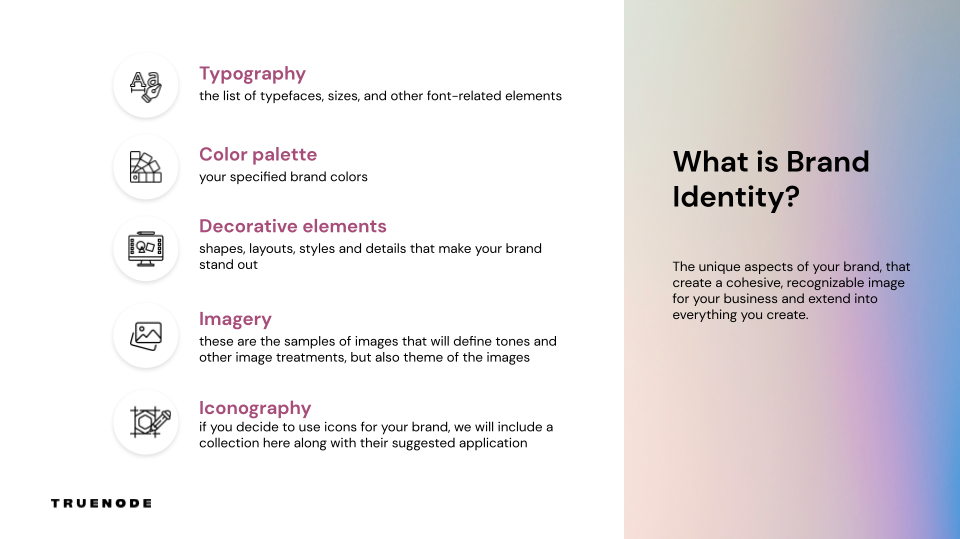
Branding Case Study – Cannabis Doctors
Cannabis Doctors, a new digital platform created to help patients in Germany receive medical cannabis, wanted a brand from scratch as they designed the new digital platform to help patients in receiving medical cannabis therapy. Although medical cannabis treatments have been legal in Germany since 2017, and there are currently over 100,000 people there who benefit from it, this is still a delicate subject that needs to be handled with caution.
At TrueNode, our task was to create a brand that was convincing to patients seeking to receive medical cannabis treatment while also conveying the seriousness required in the communication of a cannabis-related topic.
In this project, we created a branding strategy based on extensive research that our team had already done in the process of validating the product. The research included benchmarking, competitor analysis, interviews with cannabis doctors and patients and general research on the topic.
Through a workshop with the client we defined the company’s values, primary and secondary messaging, brand voice, vision and mission statement.
The brand strategy focused on showing that the business was trustworthy, caring, and dedicated to offering its patients the most significant medical cannabis treatments. We created their brand identity and provided them with a logo, brand guidelines, and website UI design.
When creating the logo, our designers chose two semicircles to symbolize the letters C and D in “Cannabis Doctors”. The vibrant accent colors from the trademark palette are carried by geometric shapes. This creates a welcoming and approachable atmosphere combined with the curves and the curved semicircles. It can also be used as a decorative element and to make patterns.
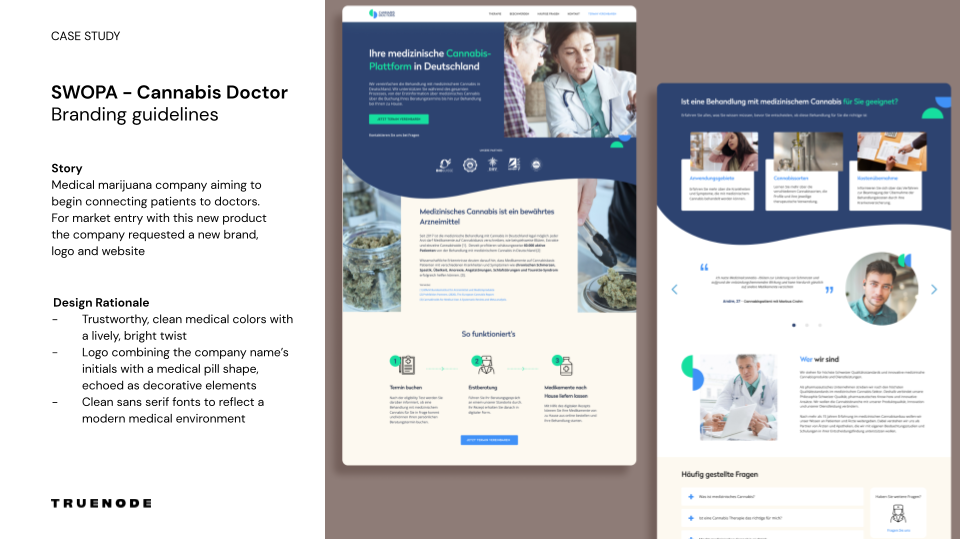
Do you need professional branding?
Building an outstanding branding strategy is not an easy task to do. However, getting help from experts may be very helpful. Contact us to help you build and transform your brand. With our forward-thinking, and unique taste and style the approach we have is both creative and analytical.

